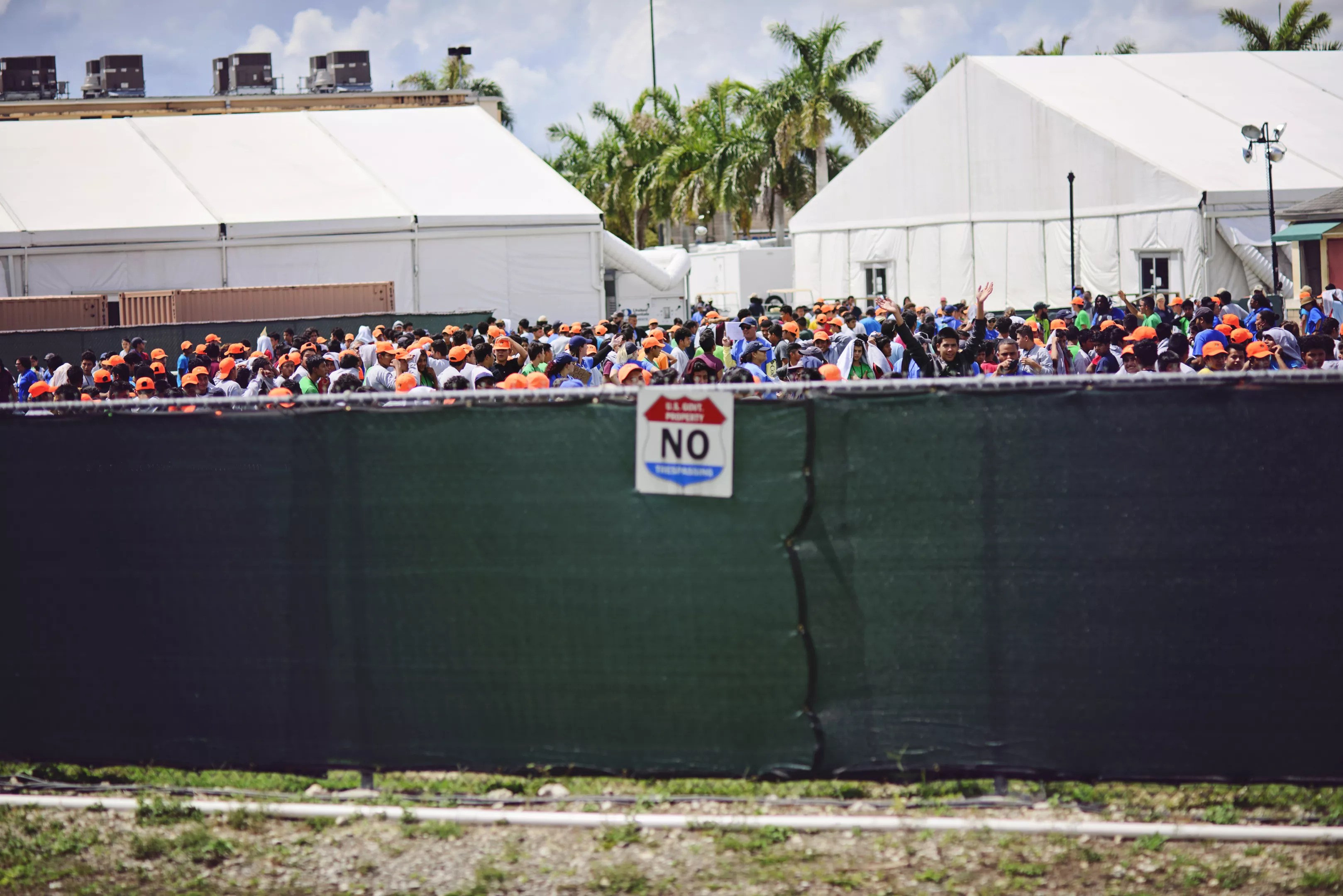
Photo courtesy of Carrie Feit

Audio By Carbonatix
Stories about the U.S. government’s child migrant camp south of Miami have not been pleasant. Children have reported crying themselves to sleep every night, missing their families, and even cutting themselves at the Homestead Temporary Shelter for Unaccompanied Children, which was, as of earlier this year, the government’s largest detention center for immigrant kids.
So to fix that problem, a D.C. lobbying firm suggested the feds shoot a propaganda film to make the Homestead camp look good. According to public records uncovered this weekend by Young Turks reporter Ken Klippenstein, the lobbying and PR firm Qorvis – otherwise famous for being one of the few lobbying agencies happy to take Saudi money – proposed the government craft a series of five-minute videos to make the facility look happy and like a great place for kids who definitely are not weeping and self-harming.
“We see the exteriors of Homestead (HS),” the script begins. “It is a former military base, but we shoot it to capture as much beauty as possible. Early-morning sun-flares casting a glow on the buildings. A succession of shots goes from the lush trees between the dining facility and classroom to the buildings where the children live temporarily.”
New Times toured the facility in February – rather than seeming “lush,” the place looked like a cross between a grade school and a prison.
Child migrant detention facility propaganda film script got leaked to me and it's wild.
“We see exteriors of Homestead. It is a former military base but we shoot it to capture as much beauty as possible.”
For @tytinvestigates: https://t.co/0kNbRGLL2x pic.twitter.com/B7IorX5AFk
— Ken Klippenstein (@kenklippenstein) September 7, 2019
The spec script, dated July 2019, says the videos would focus on four areas: “home life,” education, medical care, and recreation. The “home life” section suggests showing the “jovial chaos” of life inside the facility, even though New Times has reported multiple times that kids held there were terrified of being trapped longer if they misbehaved, that many had been inside the shelter for months despite having willing sponsors waiting for them on the outside, and that they were in some cases forced to use moldy and mildewy bathrooms.
The documents list the “creative director/producer” for the videos as Tetiana Anderson, who also handles public relations for Caliburn International, the for-profit company making gobs of money running the Homestead facility for the federal government. (Anderson did not immediately respond to a request for comment from New Times this morning.)
According to the Miami Herald, the facility is empty because it’s not safe during a hurricane. But kids are supposed to be returned to the camp as early as October.